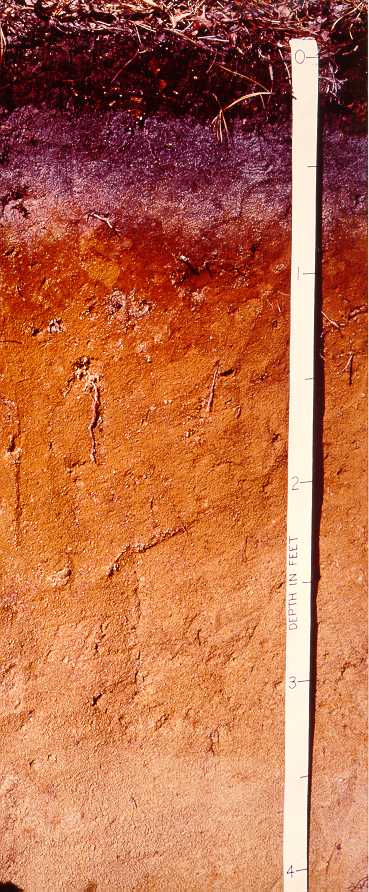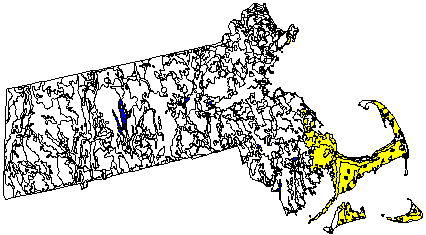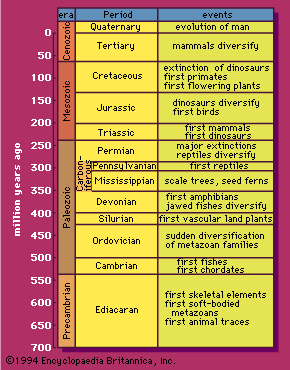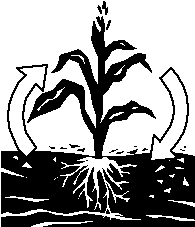
Carver Soil Information Sheet

The Carver soil series was established in Plymouth County Massachusetts in 1911, and is named for the town of Carver where it was first described and mapped. There are over 110,000 acres of Carver soils mapped in New England, New York and New Jersey. Carver soils are very deep, excessively drained soils formed in layers of coarse and very coarse sand that contain less than 20 percent rock fragments, most of which are fine gravel. Carver soils are level to steep soils on pitted and dissected outwash plains and moraines. Slopes are dominantly 0 to 15 percent but range to 45 percent. Mean annual temperature ranges from 45 to 50 degrees F. Mean annual precipitation ranges from 35 to 50 inches.
Carver Soil Properties:
Taxonomic Classification: Mesic, uncoated, Typic Quartzipsamments.
Drainage Class: Excessively drained.
Parent Material: Coarse sand eolian deposits underlain by sandy fluvial deposits.
Permeability: Very rapid throughout.
Available Water Holding Capacity: Very low.
Soil Reaction (pH): Extremely acid to moderately acid throughout.
Depth to Bedrock: Greater than 65 inches.
Massachusetts Uses of Carver Soils
Carver soils are located primarily in the southeastern part of Massachusetts, but also mapped throughout the State. The major land uses in SE Massachusetts are suburban housing, woodland productivity, and agriculture. It is also the fastest developing area in the State. Due to its sandy nature and very rapid permeability, Carver soils are associated with aquifer recharge areas, the two largest aquifers in the State; the Cape Cod sole source aquifer and the Plymouth-Carver aquifer are overlain almost entirely by Carver soils. The main agriculture in this area is cranberry production and small fruit and vegetable farms. Carver soils have very low water holding capacity and unless irrigated, are not well suited for intensive agricultural production. The low water holding capacity also makes Carver soils poorly suited for woodland productivity. Trees commonly growing on Carver soils include low quality Pitch Pine and Scrub Oak. White Pine also grows well on Carver soils, but hardwoods such as Red and White Oak do not grow well. Carver soils have few limitations for commercial and residential development. The soil is excessively drained so there are no problems associated with high water tables or slowly permeable layers which interfere with septic systems. The soil is easily excavated and erosion hazards are limited due to the high percentage of coarse sand. Caution must be taken however to protect the aquifer, which underlies the Carver soil.

Location of Carver Soils in Massachusetts
Carver Soil Formation (for more information on soil formation click HERE)
Soils are formed through the interaction of five major factors: time, climate, parent material, topography (relief), and biology. The relative influence of each factor varies from place to place, but the combination of all five factors normally determines the kind of soil developing in any given place. In Southeastern Massachusetts, parent material and relief as it relates to drainage, account for many of the differences among the named soils. The following are brief explanations of the factors contributing to soil formation of Carver soils.
Time:
The formation of soils is a continuing process and generally takes several thousand years for significant changes to take place. The soils of Southeastern Massachusetts began to develop immediately after the ice retreat of the last glacial period during the Pleistocene epoch, which ended 10,000 years ago. Carver soils are considered to be relatively young soils with slight alteration of parent material and weak soil horizon development.
Climate
Climate, particularly temperature, precipitation and frost action has a profound influence on the soil forming processes that occur within a region. Southeastern Massachusetts is in a transitional climate zone with conditions characteristic of both humid marine and humid continental climates. The winters are quite mild for New England due to the moderating effect of the surrounding Atlantic waters. Temperature and precipitation govern the rate of chemical and physical weathering of the soils and allows for the accumulation of organic matter in the surface layer of the soils. Moisture is sufficient enough to promote leaching of water-soluble material down through the soil. Carver soils have a mesic soil temperature regime and a udic moisture regime (see soil taxonomy section).
Parent Material
Parent material is the unconsolidated mineral and organic deposits which soils are developing. It determines the mineralogical composition and contributes largely to the physical and chemical characteristics of the soil. The kind of parent material also influences the rate at which soil forming processes take place. The substratum (or C horizon) of Carver soils formed in sandy glacial - fluvial sediments deposited in melt-water streams flowing from glacial ice during the retreat of the last glacial period. The solum (A and B horizons) of Carver soils were deposited by strong winds caused by the combination of nearby glacial ice and warm barren land. This wind blown deposit, called eolian material, is evident by the presence of ventifacts (wind polished rock fragments) commonly found within the solum of Carver soils.
Topography and Relief
The shape of the land surface, slope, and position on the landscape all greatly influence the kinds of soils formed. In Southeastern Massachusetts soils that formed in similar parent materials with the same climatic conditions exhibit differences as a result of their position on the landscape. These differences are largely a result of varying drainage conditions due to surface runoff or depth to water table. Carver soils are excessively drained soils on gently sloping to very steep uplands. The bright yellowish-brown colored subsoil of the Carver soils (caused by iron-oxide coating the sand particles) formed in the dry upland area.
Biology
 All living organisms actively influence the soil
forming process. These organisms include bacteria, fungi,
vegetation and animals (including man). Their major influence is
the effect on the chemical and physical environment of the soils.
Most of Southeastern Massachusetts was originally in native
forest of mixed hardwoods and conifers in varying proportions.
The mineral element content of leaves and branches varies
depending on the type of forest vegetation, and influences the
characteristics of the soils that develop beneath it. Hardwoods
characteristically take up bases (calcium, magnesium, and
potassium) from the soil and return them to the soil surface in
the form of organic litter; thus recycling the soil nutrients.
Coniferous trees tend to be low in bases, consequently soils
developed beneath them tend to be more acid. Bases are also more
susceptible to leaching beneath coniferous trees.
All living organisms actively influence the soil
forming process. These organisms include bacteria, fungi,
vegetation and animals (including man). Their major influence is
the effect on the chemical and physical environment of the soils.
Most of Southeastern Massachusetts was originally in native
forest of mixed hardwoods and conifers in varying proportions.
The mineral element content of leaves and branches varies
depending on the type of forest vegetation, and influences the
characteristics of the soils that develop beneath it. Hardwoods
characteristically take up bases (calcium, magnesium, and
potassium) from the soil and return them to the soil surface in
the form of organic litter; thus recycling the soil nutrients.
Coniferous trees tend to be low in bases, consequently soils
developed beneath them tend to be more acid. Bases are also more
susceptible to leaching beneath coniferous trees.
SOIL PROFILE DEVELOPMENT
 The interaction of the five soil-forming factors;
time, climate, parent material, topography, and plant and animal
life, result in the development of a soil profile. A soil profile
is a vertical section of the soil beginning at the surface and
extending down into the unconsolidated underlying material to a
depth of 60 inches or more. A soil horizon is a layer of soil,
approximately parallel to the soil surface, with distinct
characteristics produced by soil-forming processes. The physical
and chemical characteristics observed within the soil profile are
the basis for differentiating one soil from another. Soil
horizons are designated with the capital letters O, A, E, B, C,
and R, lowercase letters are used as suffixes to designate
specific kinds of these master horizons. The following horizons
are typically observed and described in Carver soils:
The interaction of the five soil-forming factors;
time, climate, parent material, topography, and plant and animal
life, result in the development of a soil profile. A soil profile
is a vertical section of the soil beginning at the surface and
extending down into the unconsolidated underlying material to a
depth of 60 inches or more. A soil horizon is a layer of soil,
approximately parallel to the soil surface, with distinct
characteristics produced by soil-forming processes. The physical
and chemical characteristics observed within the soil profile are
the basis for differentiating one soil from another. Soil
horizons are designated with the capital letters O, A, E, B, C,
and R, lowercase letters are used as suffixes to designate
specific kinds of these master horizons. The following horizons
are typically observed and described in Carver soils:
O Horizon: Organic layer consisting of partly to moderately decomposed organic matter. O horizons in Carver soils are usually 1 to 3 inches thick and consist of pine needles and leaf litter.
A Horizon: Mineral horizon with an accumulation of humified organic matter intimately mixed with the mineral material. A-horizons in Carver soils are usually less than 3 inches thick, consist almost entirely of coarse sand and often has a pepper-salt appearance.
E Horizon: A mineral subsurface layer where iron, aluminum and organic matter have been removed (eluviation). E-horizons in Carver soils are thin and often mixed with the A horizon, consist of uncoated quartz sand grains.
B Horizon: A mineral subsurface horizon which is characterized by chemical weathering of iron, an accumulation of iron, aluminum or clay (illuviation) and/or structural development. The chief coloring agent is iron, which imparts a reddish brown color,caused by the iron-oxide (rust) coating the sand grains.
C Horizon: The unweathered geologic material the soil formed in. Carver soils formed in sandy glacial fluvial deposits. The C horizons are typically very deep in Carver soils, extending down 100's of feet in many areas.